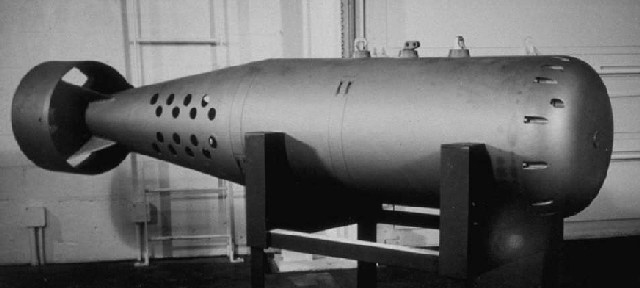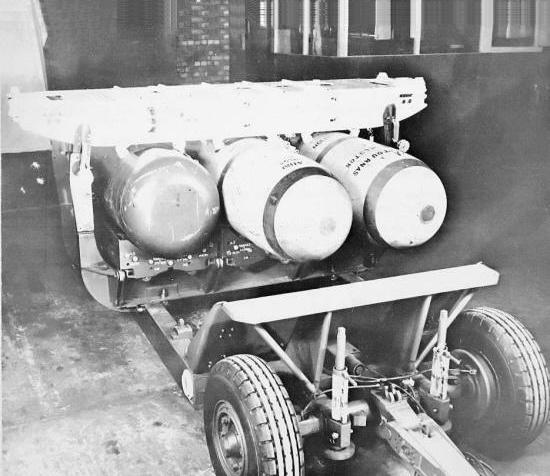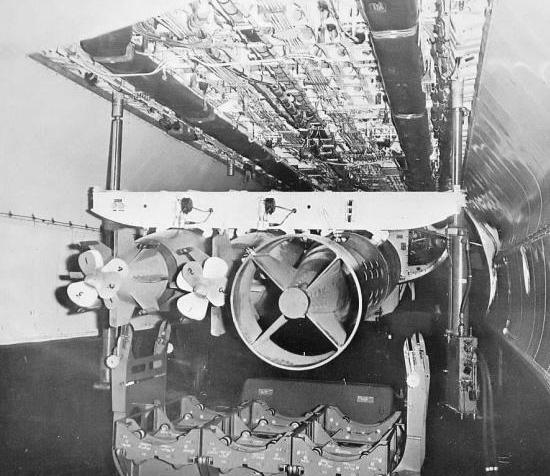|
Functions with Internet Explorer, but not tested in other browsers. Coming soon is a further section on the complex logistic supply chain for the naval WE.177A weapon. |
The format is alphabetical, an A-Z of projects.
|

|
OctopusUnder construction. |

|
Contents |
See also
|
Operation TigressUnder construction. |

|
Contents |
See also
|
Option MUnder construction. |

|
Contents |
See also
|
OR.203 |

|
Contents |
See also
|
OR.240Under construction. |

|
Contents |
See also
|
OR.340Under construction. |

|
Contents |
See also
|
OR.1001 |

|
Contents |
See also
|
OR.1002 |

|
Contents |
See also
|
OR.1006 |

|
Contents |
See also
|
OR.1059 |

|
Contents |
See also
|
OR.1089Under construction. |

|
Contents |
See also
|
OR.1097 |

|
Contents |
See also
|
OR.1122 |

|
Contents |
See also
|
OR.1123 |

|
Contents |
See also
|
OR.1127 |

|
Contents |
See also
|
OR.1131 Red HebeUnder construction. |

|
Contents |
See also
|
OR.1132 |

|
Contents |
See also
|
OR.1136 |

|
Contents |
See also
|
OR.1138Under construction. |

|
Contents |
See also
|
OR.1139 |

|
Contents |
See also
|
OR.1140Under construction. |

|
Contents |
See also
|
OR.1141 |

|
Contents |
See also
|
OR.1142Under construction. |

|
Contents |
See also
|
OR.1144 |

|
Contents |
See also
|
OR.1147Under construction. |

|
Contents |
See also
|
OR.1149Under construction. |

|
Contents |
See also
|
OR.1153Under construction. |

|
Contents |
See also
|
OR.1154Under construction. |

|
Contents |
See also
|
OR.1156 |

|
Contents |
Genesis |
|
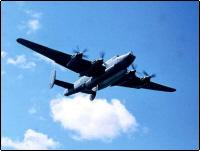 |
|
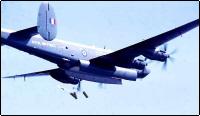 |
Ultimately, given the pressures on resources, the Coastal Command requirement was rewritten around the US Mk-101 Lulu Project N weapon for issue to RAF Shackleton MR2 and MR3 squadrons.(15) Unlike most other nuclear strike aircraft, Shackletons and their Nimrod successors were equipped to carry mixed loads of nuclear and non-nuclear weapons, typically a mixture of NDBs and homing torpedos.(16) A further requirement for a British successor to the Project N weapon, renumbered OR.1178 became a joint Naval Staff/Air Staff requirement and subsumed into OR.1177 and deployed with the Royal Navy in 1969 as WE.177A.(17)
|
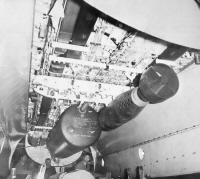
|
The Royal Navy deployed WE.177A in its intended role as a fixed-wing strike weapon and as a helicopter-borne anti-submarine weapon. However, neither RAF Coastal Command long-range maritime patrol Shackletons or its successor, the Nimrod, ever deployed this weapon. There were plans to do so, but never implemented; the 79 WE.177A weapons planned for their use being allocated elsewhere.(18) From 1961(19) Shackletons were supplied with a stock of 36 US Navy Project 'N' weapons maintained for their use at RAF St Mawgan, Cornwall,(20) and Sigonella US NAS, Sicily.(21) Shackletons carried the Mk-101 Lulu NDB, and were able to carry two plus other weapons.(22) Nimrods could carry two B-57 NDBs, but were allocated only one per aircraft.(23) Use of the American weapons was restricted to the NATO area and temporary deployments of Coastal Command Shackletons and Nimrods to the Middle and Far East were without nuclear weapons.(24) A primary reason for wanting a UK-owned NDB for these aircraft was to free them from that and other restrictions on their operational flexibility. Nimrods based in Cyprus on NATO duties had to first fly the 894 nm to Sicily to collect their weapons from American custody.(25)
| 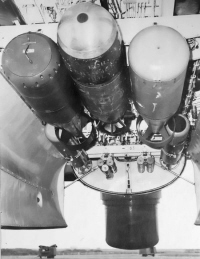
|
Where can I see one?
|
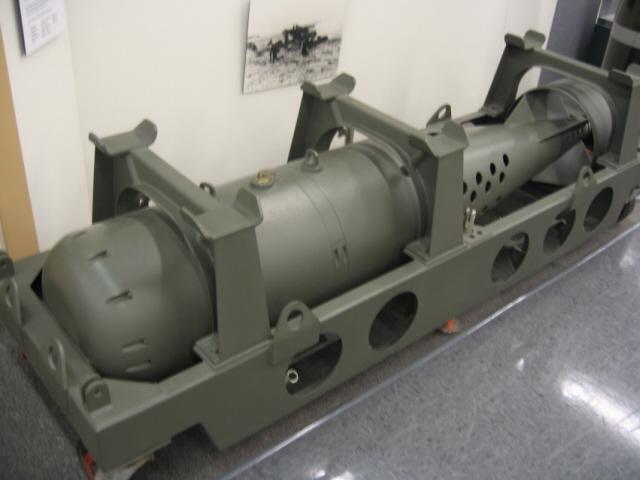
|

|
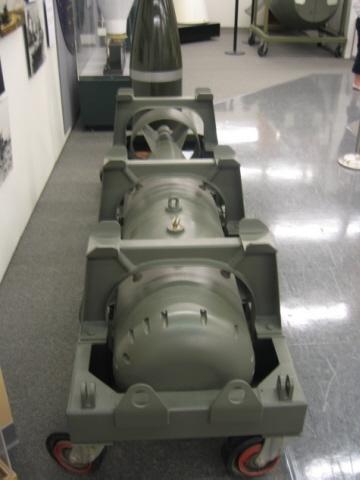
|

|
- nuclearweaponarchive For basic data on similar American weapons.
- Chuck Hansen: Swords of Armageddon Vol 6 pps 6, 375-376, 423, 463, for an account of the US Mk-101 and other
- weapons in greater depth.
- Dr Richard Moore The Real Meaning of the Words: a Pedantic Glossary of British Nuclear Weapons.
- Nuclear History Working Paper No 1.
- First published by the Mountbatten Centre for International Studies, University of Southampton. Dr Moore is a Visiting Research Fellow at the Centre for Science and Security Studies at King's College, London, the Official Historian at AWE Aldermaston, and formerly a Visiting Research Fellow at the Mountbatten School of International Studies at the University of Southampton.
-
Typical NDB release and water entry from a low-flying maritime patrol bomber.
- In this US DoE film, a US Navy P2 Neptune aircraft similar to the Shackleton's predecessor in RAF service.
- back TNA AIR 2/17322 E3A p1 OR 1177: improved kiloton bomb. 1959-1960. Dated 18 Aug 1959.
- back TNA AIR 2/13692 E26A p1 Nuclear depth charge (OR 1156). 1956-1958.
back TNA AIR 2/13692 E26A p2 Nuclear depth charge (OR 1156). 1956-1958.
back TNA AIR 2/13692 E26A p3 Nuclear depth charge (OR 1156). 1956-1958.
back TNA AIR 2/13692 E26A p4 Nuclear depth charge (OR 1156). 1956-1958.
back TNA AIR 2/13692 E26A p5 Nuclear depth charge (OR 1156). 1956-1958. - back TNA AIR 2/13692 E6B p1 Nuclear depth charge (OR 1156). 1956-1958.
- back TNA AIR 2/13692 E5B p4 Nuclear depth charge (OR 1156). 1956-1958.
back TNA AIR 2/13692 E5B p8 Nuclear depth charge (OR 1156). 1956-1958. - back TNA AIR 2/13692 E26A p1 ¶6 Nuclear depth charge (OR 1156). 1956-1958.
back TNA AIR 2/13692 E26A p2 ¶7 Nuclear depth charge (OR 1156). 1956-1958. - back Dr Richard Moore The Real Meaning of the Words: a Pedantic Glossary of British Nuclear Weapons.
- Nuclear History Working Paper No 1. See Skybolt section.
- First published by the Mountbatten Centre for International Studies, University of Southampton. Dr Moore is a Visiting Research Fellow at the Centre for Science and Security Studies at King's College, London, the Official Historian at AWE Aldermaston, and formerly a Visiting Research Fellow at the Mountbatten School of International Studies at the University of Southampton.
back TNA AIR 2/17322 E69A p1 OR 1177: improved kiloton bomb. 1959-1960.
- back TNA ADM 1/30991 E7 p2 An improved kiloton bomb. 1959-1961.
- back TNA AVIA 65/1862 E16 p23-24 ASR 1176 and 1177: nuclear weapon requirement. 1959-1963.
- back TNA AIR 2/13692 E26A p1 Nuclear depth charge (OR 1156). 1956-1958.
- back TNA AIR 2/17322 E25A. OR 1177: improved kiloton bomb 1959-1960.
back TNA AIR 2/17322 E69A p1 OR 1177: improved kiloton bomb 1959-1960. - back TNA AIR 2/13692 E26A p2 Nuclear depth charge (OR 1156) 1956-1958.
- back TNA AIR 2/17322 E40A p2 OR 1177: improved kiloton bomb 1959-1960.
back TNA AIR 2/17322 E40A p3 OR 1177: improved kiloton bomb 1959-1960. - back TNA AIR 2/13692 E26A p2 Nuclear depth charge (OR 1156) 1956-1958.
- back TNA AIR 2/13692 E26A p2 Nuclear depth charge (OR 1156). 1956-1958.
- back TNA AVIA 65/2082 E7A p2 Project E: mixed weapon load; Shackleton MR Mk 3 1965-1970.
back TNA AVIA 65/2082 E7A p3 Project E: mixed weapon load; Shackleton MR Mk 3. 1965-1970. - back TNA AVIA 65/2082 E7A p15 Project E: mixed weapon load; Shackleton MR Mk 3 1965-1970.
- back TNA DEFE 32/18 E25 p2 Chiefs of Staff Committee: Secretary's standard file. 1969.
- back TNA AIR 2/18210 E62 Nuclear weapons policy. 1969-1970.
back TNA AIR 2/18210 E63 p4 Nuclear weapons policy. 1969-1970.
back TNA AIR 2/18210 E63 p8 Nuclear weapons policy. 1969-1970.
back TNA AIR 2/18210 E63 p11 Nuclear weapons policy. 1969-1970. - back TNA AVIA 65/2082 E7A p10 Project E: mixed weapon load; Shackleton MR Mk 3. 1965-1970.
back Norris, Burrows, Fieldhouse Nuclear Weapons Databook Vol 5 British French and Chinese Nuclear Weapons p63-4- Published by The Westview Press, Oxford, 1994. ISBN 08133 16111 softback, 08133 1612X hardback. This unofficial source that is demonstrably less accurate at times, puts the service entry later at 1965 and quantity at 60 through to 1987 when quantity declined to 40 until 1992 when quantity was nil. Official sources at TNA AIR 2/18210 E62 put the figures at 36 US weapons increasing to 72 plus 7 spares when UK-supplied WE.177A weapons became available from 1971-72, which they never did.
- back TNA AIR 2/18210 E63 p4 Nuclear weapons policy. 1969-1970.
back TNA DEFE 24/691 E28 p6 Polaris, Poseidon and Holy Loch. 1970-1971 - back TNA AIR 2/18210 E63 p4 Nuclear weapons policy. 1969-1970.
- back TNA AVIA 65/2013 p2 Project E: mixed weapon load CA release 1200lb for Shackleton MR Mk 2. 1966-1969.
back TNA AVIA 65/2013 p17. Project E: mixed weapon load CA release 1200lb for Shackleton MR Mk 2. 1966-1969.
back TNA AVIA 65/2013 p18 Project E: mixed weapon load CA release 1200lb for Shackleton MR Mk 2. 1966-1969. - back TNA AIR 2/18210 E62 Nuclear weapons policy. 1969-1970.
- back TNA AIR 2/18210 E63 p11 Nuclear weapons policy. 1969-1970.
- back Great Circle Mapper. Shortest great circle route Akrotiri to Sigonella.
- Dr Richard Moore. Nuclear Illusion, Nuclear Reality. Britain, the United States and Nuclear Weapons,1958-64.
- Dr Richard Moore. The Real Meaning of the Words: a Pedantic Glossary of British Nuclear Weapons.
- Cocroft & Thomas. Cold War, Building for Nuclear Confrontation 1946-89. ISBN 1-873592-69-8. Pub: English Heritage. 2003.
- C Gibson & T Buttler. Hypersonics, Ramjets and Missiles: British Secret Projects.
- ISBN 978-1-85780-280-0 Midland Publishing, 2007. An outstanding account of British missile development from infancy, and especially useful for an account of the 'stop-gap' weapons that competed with WE.177B.
- Dr John R. Walker. British Nuclear Weapons and the Test Ban 1954–1973. Britain, the United States, Weapons Policies and
- Nuclear Testing.
ISBN: 9781409481201 Publisher: Ashgate, London. 2010.- Dr Walker is employed in the Arms Control and Disarmament Research Unit, Foreign and Commonwealth Office, London.
- Tim McLelland The Avro Vulcan: a complete history.
- ISBN 978-0-85979-127-4 Crécy Publishing, Manchester 2007.Some contradictions, but a good account of early UK atom bomb history and rationale for the V-bombers.
- Philip Birtles The Avro Vulcan: Britain's Cold War Warrior.
- ISBN 978-1-85780-269-6 Midland Publishing 2007. Good photograph resource.
- Richard Moore. Prospero, - Journal of the British Rocketry Oral History Project, Spring 2004.
- Dr Moore is a Visiting Research Fellow at the Centre for Science and Security Studies in the Dept of War Studies, King's College, London; the Official Historian at AWE Aldermaston and formerly a Visiting Research Fellow, Mountbatten Centre for International Studies, University of Southampton.
- Richard Rhodes The Making of the Atomic Bomb.
- ISBN 0-684-81378-5 Simon & Schuster, New York 1986. Just what it says on the cover, although US-centric. Very readable account from a Pullizer Prizewinner. Not too technical.
- Richard Rhodes Dark Sun, The Making of the Hydrogen Bomb.
- ISBN 0-684-80400-X Simon & Schuster, New York 1995. Very readable account.
- Carey Sublette. nuclearweaponarchive.org Immensely useful although showing its age with the British section outdated and
- accuracy now suspect.
- Mike Fazackerley For his superb illustrations of delivery methods and much other information.
- middle-watch.com History of Royal Navy Leander class frigates and their nuclear role with WE.177A.
- This superb website is now no longer with us.
- And of course, the staff of the National Archives, London.
- Dr Richard Moore. Nuclear Illusion, Nuclear Reality. Britain, the United States and Nuclear Weapons,1958-64.
- Dr Richard Moore. The Real Meaning of the Words: a Pedantic Glossary of British Nuclear Weapons.
- Cocroft & Thomas. Cold War, Building for Nuclear Confrontation 1946-89. ISBN 1-873592-69-8. Pub: English Heritage. 2003.
- C Gibson & T Buttler. Hypersonics, Ramjets and Missiles: British Secret Projects.
- ISBN 978-1-85780-280-0 Midland Publishing, 2007. An outstanding account of British missile development from infancy, and especially useful for an account of the 'stop-gap' weapons that competed with WE.177B.
- Dr John R. Walker. British Nuclear Weapons and the Test Ban 1954–1973. Britain, the United States, Weapons Policies and
- Nuclear Testing.
ISBN: 9781409481201 Publisher: Ashgate, London. 2010.- Dr Walker is employed in the Arms Control and Disarmament Research Unit, Foreign and Commonwealth Office, London.
- Tim McLelland The Avro Vulcan: a complete history.
- ISBN 978-0-85979-127-4 Crécy Publishing, Manchester 2007.Some contradictions, but a good account of early UK atom bomb history and rationale for the V-bombers.
- Philip Birtles The Avro Vulcan: Britain's Cold War Warrior.
- ISBN 978-1-85780-269-6 Midland Publishing 2007. Good photograph resource.
- Richard Moore. Prospero, - Journal of the British Rocketry Oral History Project, Spring 2004.
- Dr Moore is a Visiting Research Fellow at the Centre for Science and Security Studies in the Dept of War Studies, King's College, London; the Official Historian at AWE Aldermaston and formerly a Visiting Research Fellow, Mountbatten Centre for International Studies, University of Southampton.
- Richard Rhodes The Making of the Atomic Bomb.
- ISBN 0-684-81378-5 Simon & Schuster, New York 1986. Just what it says on the cover, although US-centric. Very readable account from a Pullizer Prizewinner. Not too technical.
- Richard Rhodes Dark Sun, The Making of the Hydrogen Bomb.
- ISBN 0-684-80400-X Simon & Schuster, New York 1995. Very readable account.
- Carey Sublette. nuclearweaponarchive.org Immensely useful although showing its age with the British section outdated and
- accuracy now suspect.
- Mike Fazackerley For his superb illustrations of delivery methods and much other information.
- middle-watch.com History of Royal Navy Leander class frigates and their nuclear role with WE.177A.
- This superb website is now no longer with us.
- And of course, the staff of the National Archives, London.
- nuclearweaponarchive For basic data on similar American weapons.
- Chuck Hansen: Swords of Armageddon Vol 6 pps 6, 375-376, 423, 463, for an account of the US Mk-101 and other
- weapons in greater depth.
- Dr Richard Moore The Real Meaning of the Words: a Pedantic Glossary of British Nuclear Weapons.
- Nuclear History Working Paper No 1.
- First published by the Mountbatten Centre for International Studies, University of Southampton. Dr Moore is a Visiting Research Fellow at the Centre for Science and Security Studies at King's College, London, the Official Historian at AWE Aldermaston, and formerly a Visiting Research Fellow at the Mountbatten School of International Studies at the University of Southampton.
-
Typical NDB release and water entry from a low-flying maritime patrol bomber.
- In this US DoE film, a US Navy P2 Neptune aircraft similar to the Shackleton's predecessor in RAF service.
- back TNA AIR 2/18210 E62. Nuclear weapons policy. 1969-1970.
back TNA AIR 2/18210 E63 p4. Nuclear weapons policy. 1969-1970.
back TNA AIR 2/18210 E63 p8. Nuclear weapons policy. 1969-1970.
back TNA AIR 2/18210 E63 p11. Nuclear weapons policy. 1969-1970. - back TNA AIR 2/18210 E63 p4. Nuclear weapons policy. 1969-1970.
back TNA DEFE 24/691 E28 p6. Polaris, Poseidon and Holy Loch. 1970-1971.
back US National Security Archive. Secret Understandings on the Use of Nuclear Weapons, 1950-1974.- Electronic Briefing Book 159.Para 1, 6, 8, Document 22A & Footnote 26.
- back TNA AIR 2/18210 E63 p4. Nuclear weapons policy. 1969-1970.
- back TNA AVIA 65/2013 p2. Project E: mixed weapon load CA release 1200lb for Shackleton MR Mk 2. 1966-1969.
back TNA AVIA 65/2013 p17. Project E: mixed weapon load CA release 1200lb for Shackleton MR Mk 2. 1966-1969.
back TNA AVIA 65/2013 p18. Project E: mixed weapon load CA release 1200lb for Shackleton MR Mk 2. 1966-1969. - back TNA AIR 2/18210 E62. Nuclear weapons policy. 1969-1970.
- back TNA AIR 2/18210 E63 p11. Nuclear weapons policy. 1969-1970.
- back Great Circle Mapper. Shortest great circle route Akrotiri to Sigonella.
- back TNA AIR 2/18509 E20A p1. Future nuclear weapon system requirements. 1965-70.
back TNA AIR 2/18509 E29B p7. Future nuclear weapon system requirements. 1965-70.
back TNA AIR 2/18509 E25A p2. Future nuclear weapon system requirements. 1965-70. - back TNA AIR 2/18509 E25A p2. Future nuclear weapon system requirements. 1965-70.
back TNA AIR 2/18509 E29B p6. Future nuclear weapon system requirements. 1965-70.
back TNA AIR 2/18509 E29B p7. Future nuclear weapon system requirements. 1965-70.
back TNA AIR 2/18509 E29B p11. Future nuclear weapon system requirements. 1965-70.
back TNA AIR 2/18509 E25A p2. Future nuclear weapon system requirements. 1965-70. - Dr Richard Moore. Nuclear Illusion, Nuclear Reality. Britain, the United States and Nuclear Weapons,1958-64.
- Dr Richard Moore. The Real Meaning of the Words: a Pedantic Glossary of British Nuclear Weapons.
- Cocroft & Thomas. Cold War, Building for Nuclear Confrontation 1946-89. ISBN 1-873592-69-8. Pub: English Heritage. 2003.
- C Gibson & T Buttler. Hypersonics, Ramjets and Missiles: British Secret Projects.
- ISBN 978-1-85780-280-0 Midland Publishing, 2007. An outstanding account of British missile development from infancy, and especially useful for an account of the 'stop-gap' weapons that competed with WE.177B.
- Dr John R. Walker. British Nuclear Weapons and the Test Ban 1954–1973. Britain, the United States, Weapons Policies and
- Nuclear Testing.
ISBN: 9781409481201 Publisher: Ashgate, London. 2010.- Dr Walker is employed in the Arms Control and Disarmament Research Unit, Foreign and Commonwealth Office, London.
- Tim McLelland The Avro Vulcan: a complete history.
- ISBN 978-0-85979-127-4 Crécy Publishing, Manchester 2007.Some contradictions, but a good account of early UK atom bomb history and rationale for the V-bombers.
- Philip Birtles The Avro Vulcan: Britain's Cold War Warrior.
- ISBN 978-1-85780-269-6 Midland Publishing 2007. Good photograph resource.
- Richard Moore. Prospero, - Journal of the British Rocketry Oral History Project, Spring 2004.
- Dr Moore is a Visiting Research Fellow at the Centre for Science and Security Studies in the Dept of War Studies, King's College, London; the Official Historian at AWE Aldermaston and formerly a Visiting Research Fellow, Mountbatten Centre for International Studies, University of Southampton.
- Richard Rhodes The Making of the Atomic Bomb.
- ISBN 0-684-81378-5 Simon & Schuster, New York 1986. Just what it says on the cover, although US-centric. Very readable account from a Pullizer Prizewinner. Not too technical.
- Richard Rhodes Dark Sun, The Making of the Hydrogen Bomb.
- ISBN 0-684-80400-X Simon & Schuster, New York 1995. Very readable account.
- Carey Sublette. nuclearweaponarchive.org Immensely useful although showing its age with the British section outdated and
- accuracy now suspect.
- Mike Fazackerley For his superb illustrations of delivery methods and much other information.
- middle-watch.com History of Royal Navy Leander class frigates and their nuclear role with WE.177A.
- This superb website is now no longer with us.
- And of course, the staff of the National Archives, London.
- back Wikipedia Oralloy.
- back TNA ES 10/1097 Weapon designs without oralloy or military grade plutonium. 1963.
back TNA ES 10/1287 Simple systematics of oralloy-burner yields. 1965.
back TNA ES 10/1324 Effect of U235 enrichment & initial U-234 & U-236 on final isotopes in core & tamper of oralloy- devices. 1966.
- accurate isotopes and yield. 1966.
- or oralloy for yields. 1966.
back TNA ES 10/1574 Yields of oralloy gun-gadgets. 1968.
back TNA ES 10/1675 Some calculations on Scenic, the all-oralloy KATIE. 1970.
back TNA ES 10/1727 Low-efficiency unboosted oralloy device yields. 1970.
back TNA ES 12/487 US/UK agreement on the use of atomic energy for mutual defence.- Information transmitted by UK. Effect of uranium 235 enrichment and initial uranium 234 and 236 on final isotopes in core and tamper of oralloy devices in the 20 to 30 kiloton class. 1966.
Mk-101 Lulu NDB at the National Atomic Museum, Albuquerque, New Mexico.
The holes in the tail facilitate rapid sinking. Photos: Mike Fazackerley.
References
Footnotes

See also
OR.1157
Under construction.

Contents
See also
OR.1159
Under construction.

Contents
See also
OR.1160
Under construction.

Contents
See also
OR.1161
Under construction.

Contents
See also
OR.1165
Under construction.

Contents
See also
OR.1166
Under construction.

Contents
See also
OR.1167
Under construction.

Contents
See also
OR.1168
Under construction.

Contents
See also
OR.1171
Under construction.

Contents
See also
OR.1172
Under construction.

Contents
See also
OR.1176

Contents
Description
OR.1176 was an Air Staff Operational Requirement first issued in 1959 for a boosted fission warhead with two selectable yields for a low-kiloton (0.5 and 10kt) Improved Kiloton Bomb and as a boosted
fission primary to trigger the fusion secondary of a tactical thermonuclear bomb with yields up to 300kt.. Both were intended to replace Red Beard. The OR was later merged with a Naval Staff Requirement
for a replacement for carrier-borne Red Beard weapons, with an added capability as an anti-submarine Nuclear Depth Bomb (NDB). To the combined Air Staff and Naval Staff requirement
was then added OR.1178, a requirement for an airborne anti-submarine Nuclear Depth Bomb (NDB) to be carried by RAF Coastal Command aircraft. OR.1176 and the separate requirement
OR.1177 for the warhead and casing as a complete weapon led to the weapon known as WE.177, and a fuller account can be found on the WE.176 and WE.177 pages.

Click here for illustration of how warhead size was determined by Polaris.
References
Footnotes
See also
OR.1177

Contents
Description
OR.1177 was an Air Staff Operational Requirement first issued in 1959 for an Improved Kiloton Bomb with factory-set yields from the low kilotons up to 300 kilotons,
intended to replace Red Beard. The OR was later merged with a Naval Staff Requirement for a replacement for carrier-borne Red Beard weapons, with an added capability as an
anti-submarine Nuclear Depth Bomb (NDB). To the combined Air Staff and Naval Staff requirement was then added OR.1178, a requirement for an airborne anti-submarine Nuclear Depth
Bomb (NDB) to be carried by RAF Coastal Command aircraft. OR.1177 and the separate requirement OR.1176 for the boosted-fission warhead used as a primary for the thermonuclear
secondary needed for the higher yields, and as a stand-alone warhead for the lower yield versions, led to the weapon known as WE.177. A fuller account can be found on the WE.176
and WE.177 pages.

Click here for illustration of how warhead size was determined by Polaris.
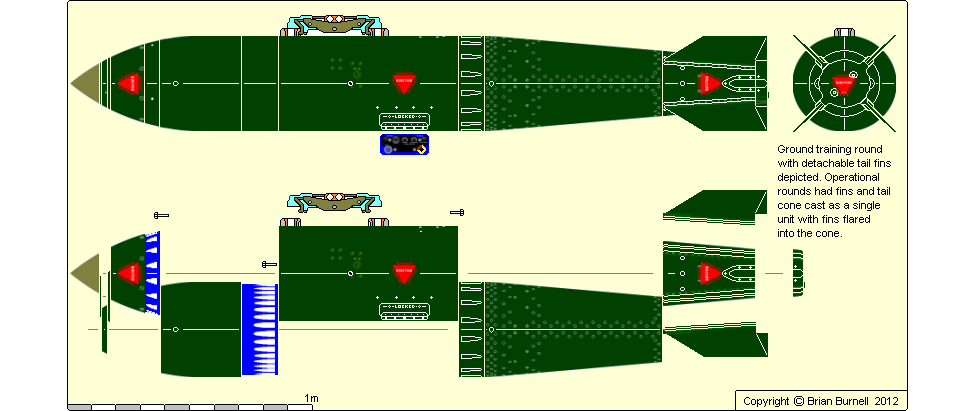
References
Footnotes
See also
OR.1178

Contents
The Royal Navy deployed WE.177A in its intended role as a fixed-wing strike weapon and as a helicopter-borne anti-submarine weapon. However, neither RAF Coastal Command long-range
maritime patrol Shackletons or its successor, the Nimrod, ever deployed this weapon. There were plans to do so, but never implemented, the 79 WE.177A weapons planned for their use
being allocated
elsewhere.(1)
UK-based RAF Nimrods continued to rely on a stock of 36 US Navy Project 'N' weapons maintained for their use at RAF St Mawgan, Cornwall,
(2)
and Sigonella US NAS, Sicily.
(3)
Shackletons could carry two Mk.101 Lulu NDBs,
(4)
Nimrods could carry two of the Mk-101 successor weapon, the B-57 NDB, but were allocated only one per aircraft.
(5)
Use of the American weapons was restricted to the NATO area and temporary deployments of Coastal Command Shackletons and Nimrods to the Middle and Far East were without nuclear
weapons.(6)
A primary reason for wanting a UK-owned NDB for these aircraft was to free them from that and other restrictions on their operational flexibility. Aircraft based in Cyprus on NATO duties had to
first fly the 894 nm to Sicily to collect their weapons from American custody.
(7)
RAF dissatisfaction and future plans
As early as 1966, before either the RAF or the Royal Navy took delivery of the first of their WE.177A
bombs,(8)
some RAF staff officers were expressing dissatisfaction with its NDB performance, claiming that its kill ratio was 40% at best, that its sink rate was poor, and that its performance as an NDB
was unduly compromised by an engineering design that was skewed to meet the land strike function. They urged senior staff officers to begin planning for a smaller, slimmer, and better,
successor NDB. A weapon whose performance as an NDB would not be degraded by a build-standard necessary to survive laydown in a land-strike role. A process that is well-described as
a controlled crash-landing. A new NDB should have a fast sink rate, a kill ratio of at least 75%, and able to be used in shallow coastal waters (unlike the US B-57 NDB deployed on RAF
Nimrod) and be in service by the mid-1970s.
RAF staff officers claimed that warhead design had by 1966 advanced considerably,(9)
that advances in miniaturization of electronics and other control mechanisms were such that a new weapon could be smaller and lighter with reliability so improved that the weight penalties of
control systems duplication could be much reduced. Referring to the WW2 improvements in kill-ratio that led to advances in attacking submerged submarines with smaller, ahead-firing
weapons of the Hedgehog type, with their smaller warheads fired in salvoes to detonate in a pattern, they pressed for development of a much smaller, lower-yield NDB to be launched in a
salvo to explode in a cluster pattern. Such a weapon, with yield measured in hundreds of tons rather than kilotons, would be deployable on the smallest surface vessels and aircraft and be
more usable in limited war, with fewer political constraints. RAF senior ranks were urged to start project and design studies quickly; although the outcome was that financial pressures
prevailed, and WE.177A served on in the ASW role with the Royal Navy until withdrawal in1992.
Where can I see one?
There are no examples of the anti-submarine nuclear depth bomb to OR.1156 or OR.1178 existing. The Operational Requirement was subsumed into OR.1177, which led to WE.177A a
multi-purpose weapon incorporating a depth bomb function. There are numerous examples of WE.177A in museums. See the WE.177 pages for details.
References
Footnotes

See also
OR.1182
Under construction.

Contents
See also
OR.1187

Contents
See also
OR.1195
Under construction.

Contents
Genesis
OR.1195 was an Air Staff Operational Requirement written in 1963(1) to specify an urgent requirement for a 'stop-gap' low-level laydown weapon to be in service by 1966, to remain in service as a strategic weapon until circa 1970 when the new UK Polaris strategic nuclear deterrent force was expected to be fully ready. In the event, this 'stop-gap' weapon, known variously as Weapon X, WE.177B, the 950 lb bomb, and officially in RAF nomenclature known as Aircraft, Bomb, HE 950 lb, MC, No 1, remained in service until 1995 in theatre roles as a sub-strategic tactical weapon, long after the V-bombers were retired.
By the early 1960s it had become clear that improvements in Soviet air defences, and in particular SAM missile technology, that the high-flying V-bombers were vulnerable, and that few would
reach their targets in the USSR. To survive, the V-bombers would need to fly a high-low-high mission profile, hugging the ground before penetrating into Soviet airspace to avoid radar
detection. To do that the bombers required a suitable weapon, and their existing strategic bomb, Yellow Sun Mk.2, could not be used in a low-level role. Yellow Sun's electrical power was
generated by two RAM air turbines and the weapon needed to be released at a minimum altitude of circa 25'000 ft to give a time of fall sufficient for its airburst radar fuzing to activate. A
thermonuclear weapon that could be released in the laydown role and as low as 50 ft was needed. No such weapon existed in the RAF inventory, so OR.1195 specified a weapon that could
be developed quickly in a crash programme by modifications to an existing nuclear weapon programme.
Beginning in 1959 the RAF and Royal Navy had a programme to develop a new tactical bomb as a Red Beard
successor,(2)
the Improved Kiloton Bomb to OR.1176 (a boosted fission warhead), and OR.1177 (the complete boosted fission bomb) known eventually as WE.177A. By 1963 this project was in
an advanced stage on the cusp of production start-up. The boosted-fission warhead (PT.176) had been developed and tested, and it was planned to be used as one of a 'family' of weapons
for other projects, as the thermonuclear primary, or 'trigger' for a UK Polaris thermonuclear warhead, possibly as a primary for the army's planned Blue Water SSM; and similarly as a primary
for the Skybolt strategic air-launched ballistic missile before its cancellation in favour of Polaris. For a new weapon to meet OR.1195 it was but a short quick step to adapt these designs using
the already-developed primary. Add a modified secondary already selected and prepared for Skybolt and Polaris warheads, and a 'stretched' casing and already developed arming and
fuzing systems for the Improved Kiloton Bomb. The result emerged as WE.177 Type B, a strategic laydown thermonuclear bomb yielding 420 kt.
In the OR.1195 weapon the full fuzing options needed for an anti-submarine nuclear depth bomb role were not required and were deleted. The version of the PT.176 primary used in OR.1177
was identified as Katie, and the secondary (derived from a modified US W-59 secondary) was identified as Simon. That same secondary was used in modified form for
ET.317, the Polaris A3T warhead; the Polaris A3TK Chevaline warhead; and WE.177C.
A fuller account of the OR.1195 weapon can be found on the
WE.176 and
WE.177 and
Weapon X pages.
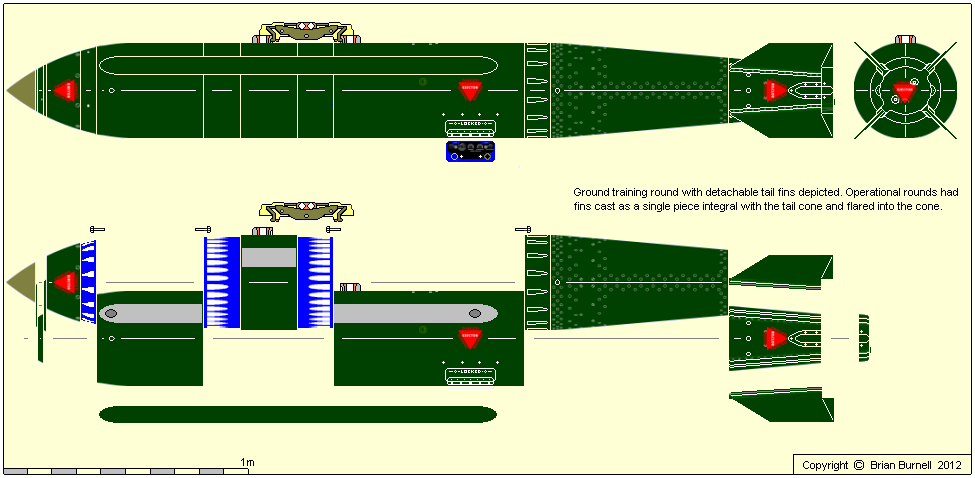
Quantities produced.
A total of 53 were produced.(3)
48 were deployed to six Vulcan B2 squadrons in the UK and
Cyprus(4)
with 5 spare weapons and 6 inert surveillance
rounds.(5)
None were assigned to Victor B2 aircraft which carried the Blue Steel weapon instead, modified for release at low altitude. One example was retired early after a mishap. The
remaining 52 were expected to be handed-down to TSR2 aircraft until its cancellation. Instead, after the Vulcans were retired, WE.177B was carried by Tornado squadrons until 1995. The
Type B could also be carried by RAF Buccaneer S2 bombers, although there is no evidence known to this writer of any being assigned to Buccaneer squadrons.
Costs
WE.177B
Warhead fabrication cost Jan 1963 ****
£75'000
Inflation adjusted warhead fabrication cost to Jan 2013 ****
£572'314
Bomb carcase fabrication cost Jan 1963
£20'000
Inflation adjusted bomb carcase fabrication cost to Jan 2013
£152'617
Total estimated weapon cost Jan 1963 ****
£95'000
Inflation adjusted total weapon cost to Jan 2013 ****
£724'931
Cost per weapon based on 4kg Pu-239 inflation adjusted to 2013 prices.
£2.556 million
**** Not including fissile material cost already paid for, recycled from earlier weapons.
Data from the National Archives, London, AVIA 66/10 E1 page 7 and AB 16/3878 Appx 4 page 1.
Photo Gallery













































References
See also
Oralloy

Contents
Description
Oralloy was an acronym codename composed of letters from three words Oak Ridge Alloy that was coined originally to describe the fissile material, - military-grade U-235 metal, also referred to as HEU (Highly Enriched Uranium) produced for the wartime Manhatten Project at Oak Ridge National Laboratory, Tennessee.(1) The wartime-produced Oralloy material was enriched to 80% and used in the Little Boy bomb dropped at Hiroshima. That 80% level of enrichment is believed to define Oralloy in postwar years. There is no hard evidence to suggest that the only source of oralloy is the Oak Ridge National Laboratory; or that oralloy-grade material is only produced in the United States at Oak Ridge.
The name continued in use in the post-war years, in the United States and the United Kingdom, and appears frequently in official UK archived documents,(2) and is commonly used interchangably with U-235 and HEU in original archived documents and accounts by historians.
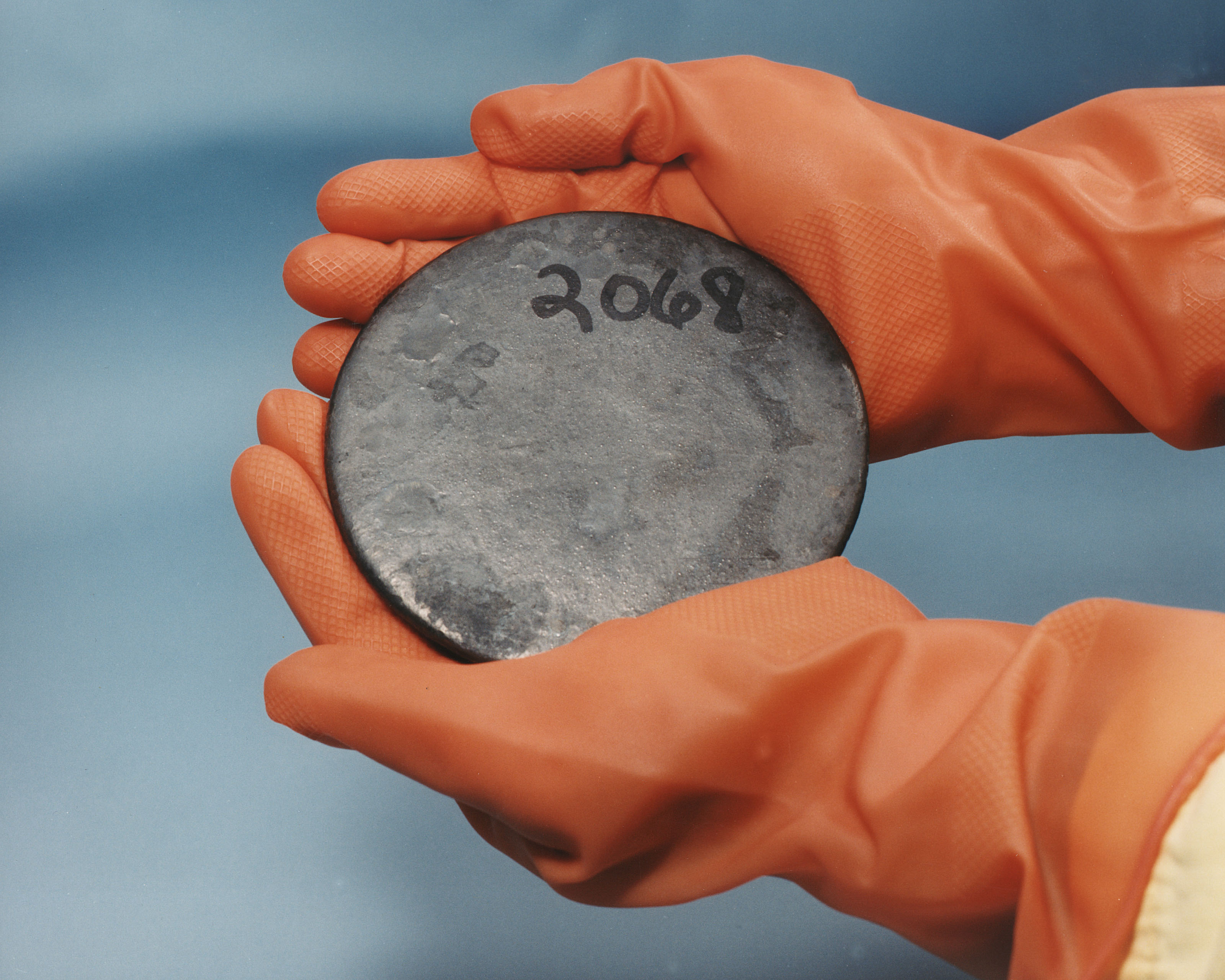
Oralloy metal billet recovered from scrap at the Oak Ridge Y12 plant. Photo: Wikipedia Commons & US Dept of Energy.
Footnotes

See also
Orange Herald
Under construction.

Contents
See also
References
|
Footnotes

|
See also
|
OR.1157Under construction. |

|
Contents |
See also
|
OR.1159Under construction. |

|
Contents |
See also
|
OR.1160Under construction. |

|
Contents |
See also
|
OR.1161Under construction. |

|
Contents |
See also
|
OR.1165Under construction. |

|
Contents |
See also
|
OR.1166Under construction. |

|
Contents |
See also
|
OR.1167Under construction. |

|
Contents |
See also
|
OR.1168Under construction. |

|
Contents |
See also
|
OR.1171Under construction. |

|
Contents |
See also
|
OR.1172Under construction. |

|
Contents |
See also
|
OR.1176 |

|
Contents |
Description |
|

Click here for illustration of how warhead size was determined by Polaris.
References
|
Footnotes |
See also
|
OR.1177 |

|
Contents |
Description

|

|
References
|
Footnotes |
See also
|
OR.1178 |

|
Contents |
|
RAF dissatisfaction and future plans
RAF staff officers claimed that warhead design had by 1966 advanced considerably,(9) that advances in miniaturization of electronics and other control mechanisms were such that a new weapon could be smaller and lighter with reliability so improved that the weight penalties of control systems duplication could be much reduced. Referring to the WW2 improvements in kill-ratio that led to advances in attacking submerged submarines with smaller, ahead-firing weapons of the Hedgehog type, with their smaller warheads fired in salvoes to detonate in a pattern, they pressed for development of a much smaller, lower-yield NDB to be launched in a salvo to explode in a cluster pattern. Such a weapon, with yield measured in hundreds of tons rather than kilotons, would be deployable on the smallest surface vessels and aircraft and be more usable in limited war, with fewer political constraints. RAF senior ranks were urged to start project and design studies quickly; although the outcome was that financial pressures prevailed, and WE.177A served on in the ASW role with the Royal Navy until withdrawal in1992. |
Where can I see one?
|
References
|
Footnotes

|
See also
|
OR.1182Under construction. |

|
Contents |
See also
|
OR.1187 |

|
Contents |
See also
|
OR.1195Under construction. |

|
Contents |
Genesis
By the early 1960s it had become clear that improvements in Soviet air defences, and in particular SAM missile technology, that the high-flying V-bombers were vulnerable, and that few would reach their targets in the USSR. To survive, the V-bombers would need to fly a high-low-high mission profile, hugging the ground before penetrating into Soviet airspace to avoid radar detection. To do that the bombers required a suitable weapon, and their existing strategic bomb, Yellow Sun Mk.2, could not be used in a low-level role. Yellow Sun's electrical power was generated by two RAM air turbines and the weapon needed to be released at a minimum altitude of circa 25'000 ft to give a time of fall sufficient for its airburst radar fuzing to activate. A thermonuclear weapon that could be released in the laydown role and as low as 50 ft was needed. No such weapon existed in the RAF inventory, so OR.1195 specified a weapon that could be developed quickly in a crash programme by modifications to an existing nuclear weapon programme. Beginning in 1959 the RAF and Royal Navy had a programme to develop a new tactical bomb as a Red Beard successor,(2) the Improved Kiloton Bomb to OR.1176 (a boosted fission warhead), and OR.1177 (the complete boosted fission bomb) known eventually as WE.177A. By 1963 this project was in an advanced stage on the cusp of production start-up. The boosted-fission warhead (PT.176) had been developed and tested, and it was planned to be used as one of a 'family' of weapons for other projects, as the thermonuclear primary, or 'trigger' for a UK Polaris thermonuclear warhead, possibly as a primary for the army's planned Blue Water SSM; and similarly as a primary for the Skybolt strategic air-launched ballistic missile before its cancellation in favour of Polaris. For a new weapon to meet OR.1195 it was but a short quick step to adapt these designs using the already-developed primary. Add a modified secondary already selected and prepared for Skybolt and Polaris warheads, and a 'stretched' casing and already developed arming and fuzing systems for the Improved Kiloton Bomb. The result emerged as WE.177 Type B, a strategic laydown thermonuclear bomb yielding 420 kt. In the OR.1195 weapon the full fuzing options needed for an anti-submarine nuclear depth bomb role were not required and were deleted. The version of the PT.176 primary used in OR.1177 was identified as Katie, and the secondary (derived from a modified US W-59 secondary) was identified as Simon. That same secondary was used in modified form for ET.317, the Polaris A3T warhead; the Polaris A3TK Chevaline warhead; and WE.177C. A fuller account of the OR.1195 weapon can be found on the WE.176 and WE.177 and Weapon X pages. |

|
Quantities produced.
|
Costs |
| |
|
|
|
|
|
|
|
|
|
|
|
|
| |
| |
|
Photo Gallery
|

